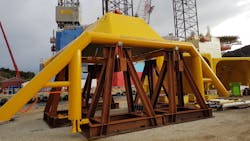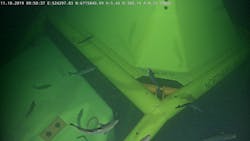Offshore staff
STAVANGER, Norway – The semisubmersible West Hercules has completed drilling the 31/5-7 ‘Eos’ well south of the Troll field in the North Sea for partners Equinor, Shell, and Total.
The aim was to assess the suitability of the reservoir in the Lower Jurassic Johansen formation for storage of carbon dioxide (CO₂), as part of the Northern Lights project.
According to Geir Tungesvik, Equinor’s senior vice president for project development, preliminary results look positive, with the well proving a sealing shale layer and good-quality sandstone in the reservoir.
The Norwegian Petroleum Directorate (NPD) added that above the sandstone reservoir, the well encountered 75 m (246 ft) of sealing homogeneous shale in the Lower Drake formation, with pressure data suggesting that rocks over and under the sealed shale layer are not in communication.
Further analysis will follow of data acquired through coring, logging, sampling, and a production test.
Equinor and its partners have agreed to share the well data with other parties and will make the information available for download.
The Eos well, drilled to a vertical subsurface depth of 2,884 m (9,462 ft) and in 307 m (1,007 ft) of water, was the first in exploitation license 001. If the Northern Lights project is sanctioned, it will be used for injecting and storing CO₂.
A potential investment decision this spring would be subject to agreement between the partners and government authorities on the implementation.
“It’s always exciting when an exploration well is drilled,” said Eva Halland, coordinator of the NPD’s CO2 storage project.
“That was also the case here, where we not only hoped to prove a water-filled reservoir, but a reservoir that would be well suited for injection and storage of CO2. The well absolutely seems to have done the job, and it is an important premise in the Norwegian full-scale project.”
The West Hercules will next drill wildcat well 35/10-5 for Equinor in North Sea production license 827 S.
03/06/2020




